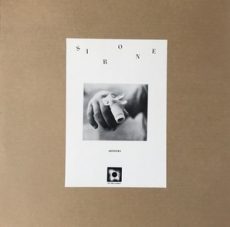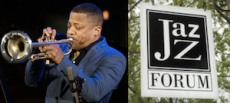
Daily Dose Of Jazz…
Norris Jones, better known as Sirone, was born September 28, 1940 in Atlanta, Georgia. He worked in Atlanta late in the 1950s and early in the 1960s with “The Group” alongside George Adams. He recorded with R&B musicians such as Sam Cooke and Smokey Robinson.
In 1966, in response to a call from Marion Brown, he moved to New York City, where he co-founded the Untraditional Jazz Improvisational Team with Dave Burrell. He also worked with Brown, Gato Barbieri, Pharoah Sanders, Noah Howard, Sonny Sharrock, Sunny Murray, Albert Ayler, Archie Shepp, and Sun Ra, as well as with John Coltrane when he was near the end of his career.
He co-founded the Revolutionary Ensemble with Leroy Jenkins and Frank Clayton in 1971. Jerome Cooper later replaced Clayton in the ensemble, which was active for much of the decade. The 1970s and early 1980s saw Sirone recording with Clifford Thornton, Roswell Rudd, Dewey Redman, Cecil Taylor, and Walt Dickerson.
In the 1980s, he was a member of Phalanx, a group with guitarist James “Blood” Ulmer, drummer Rashied Ali, and tenor saxophonist George Adams. From 1989, he lived in Berlin, Germany, where he was active with his group Concord with Ben Abarbanel-Wolff and Ulli Bartel.
Bassist, trombonist, and composer Sirone, who was involved in theater, film, and was a practicing Buddhist, died in Berlin, Germany on October 21, 2009, at the age of 69.
More Posts: bandleader,bass,composer,history,instrumental,jazz,music,trombone

NNENNA FREELON
Jazz singer and composer Nnenna Freelon brings her “Beneath The Skin” CD Release to Catalina Jazz Club, in Hollywood!
“An album that ultimately feels like a novel, a succession of scenes that leave an indelible mark. This is a work of art of the highest caliber, earning its rightful place among our collection of Essential Albums.” – Paris Moves.
Cover: $35.00 +fee | Two drink minimum or dinner
More Posts: adventure,bandleader,club,composer,genius,jazz,music,preserving,travel,vocal

MADISON MCFERRIN
Madison McFerrin brings her genre-defying sound and vocal brilliance to Missy Lane’s for a night that feels both futuristic and deeply personal. Blending a cappella roots with electronic soul, Madison crafts rich sonic landscapes that are as intimate as they are expansive. With powerful lyrics, bold musicality, and hypnotic vocal loops, her set invites you to feel, move, and reflect. Expect a night of self-love anthems, layered harmonies, and electrified energy from an artist carving her own lane in modern music.
Known for her rich tone and pitch-perfect control, Madison’s vocals layer effortlessly to create a one-woman harmony machine. Fusing soul, R&B, and electronic textures, her sound feels experimental yet deeply grounded in tradition—what she calls “future soul.” From stripped-down vulnerability to danceable joy, her live sets take you on a journey of self-reflection, resilience, and freedom.
Tickets: $56.00 ~ $200.00
More Posts: adventure,bandleader,club,genius,instrumental,jazz,music,preserving,travel,vocal

PHILIP HARPER SEXTET
From first tasting fame as one of the ’80’s “Young Lions” and co-leader of the acclaimed Harper Brothers Quintet, trumpeter Philip Harper has always kept great company.
He apprenticed with organ master Jimmy McGriff, then spent two years with Art Blakey’s Jazz Messengers. Following the Harper Brothers, he played with giants Benny Golson and Cedar Walton and joined the Mingus Big Band. He’s made over 50 recordings and constantly tours both here and in Europe.
The Band: Philip Harper ~ trumpet & vocals | Rico Jones ~ tenor saxophone | Raphael Silverman ~ guitar | Maki Nientao ~ piano | Jason Maximo Clotter ~ bass | David Hawkins ~ drums
Tickets: $30.00 Student | $35.00 Adult +fee for both
More Posts: adventure,bandleader,club,genius,instrumental,jazz,music,preserving,travel,trumpet

JOHNATHAN BLAKE
Drummer-composer Johnathan Blake returns to Ronnie Scott’s with music from his powerful new Blue Note album My Life Matters. Originally commissioned by The Jazz Gallery, the suite is both personal and political – a reflection on racial injustice, resilience, and family legacy. With themes that resonate deeply in today’s world, the music moves between contemplation and confrontation, anchored by Blake’s unmistakable rhythmic voice.
Heralded by NPR as the ultimate modernist, the Philadelphia-raised Johnathan Blake has been one of the most creative drummers of recent times, backing up heavyweights from the Mingus Big Band, Pharoah Sanders, Q-Tip and Dr. Lonnie Smith, to post-bop innovators Tom Harrell, Maria Schneider and countless other distinctive voices.
The Band: John Ellis ~ saxophone, ewi | Fabian Almazan ~ piano, electronics | Jalen Baker ~ vibraphone | Ben Street ~ bass
Cover: £40 – £55 | $40.96 ~ $64.36
More Posts: adventure,bandleader,club,drums,genius,instrumental,jazz,music,preserving,travel


